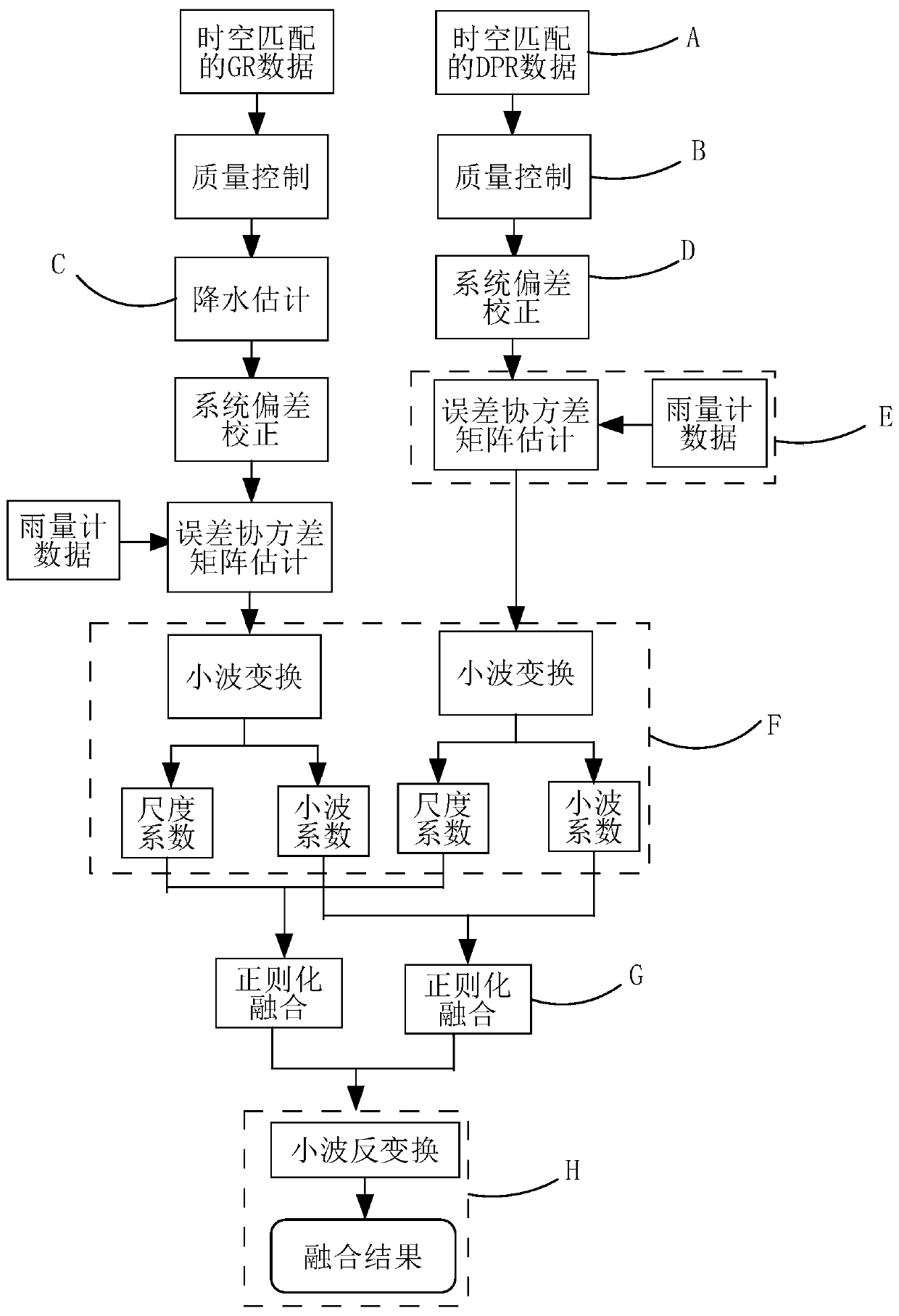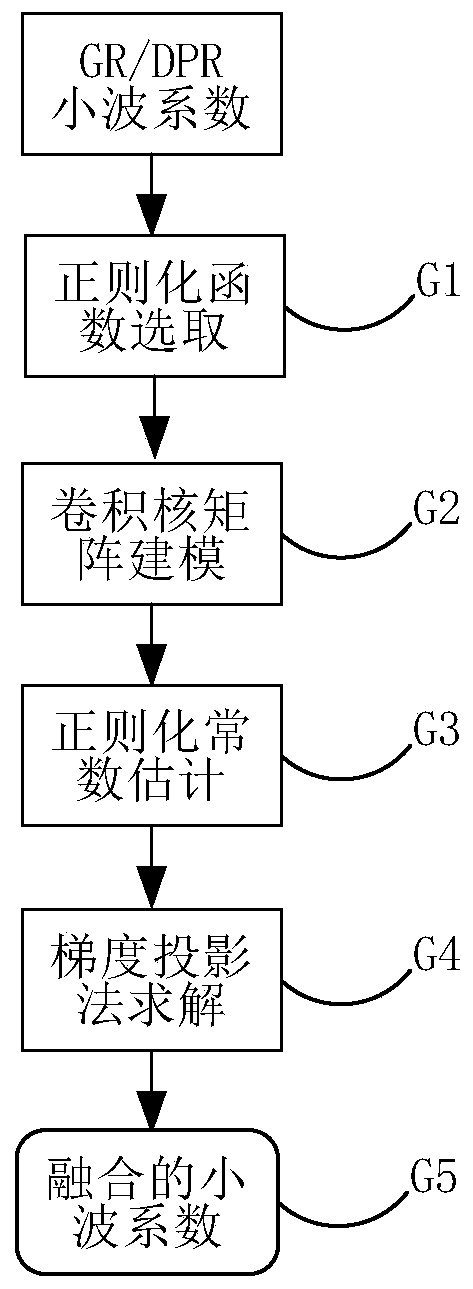Foundation and satellite-borne radar rainfall data fusion method based on wavelet domain regularization
A spaceborne radar and data fusion technology, applied in the direction of rainfall/precipitation gauge, radio wave reflection/re-radiation, character and pattern recognition, etc., can solve the problem of losing the small-scale change details of heavy precipitation and easy smoothing of heavy precipitation etc. to achieve high resolution and reduce uncertainty
- Summary
- Abstract
- Description
- Claims
- Application Information
AI Technical Summary
Problems solved by technology
Method used
Image
Examples
Embodiment 1
[0049] In order to make the purpose and technical solutions of the present invention clearer, the following in conjunction with specific implementation cases, and with reference to the attached figure 1 , the present invention is further described in detail:
[0050] The ground-based and spaceborne radar precipitation data fusion method based on wavelet domain regularization in this embodiment includes the following specific steps:
[0051] Step A: First, from the spaceborne radar DPR data and the ground-based radar GR data, select the DPR precipitation rate data and GR reflectivity factor data that match in time and space. The selection method is firstly through the known DPR scanning swath width and its The intersecting earth coordinate position, according to the swath shape model, combined with the longitude of the trajectory where the satellite reaches the highest latitude, the satellite orbit intercept and the start time of the orbit, these parameters are used to search f...
Embodiment 2
[0082] The further design of this embodiment is: the regularization and fusion process of GR / DPR wavelet coefficients in the above step G is as follows: figure 2 As shown, the following combination figure 2 A detailed description of each step:
[0083] Step G1: According to the characteristics of the scale coefficient and wavelet coefficient of GR / DPR radar precipitation estimation data, select appropriate regularization function items respectively, so as to better maintain or reconstruct small-scale details such as local discontinuous changes of precipitation in the fusion process . The regularization function acts as a constraint on the equation and directly affects the result of the minimized solution.
[0084] From image 3 (a)~(c) It can be seen that the probability distribution of wavelet coefficients of radar echo data is non-Gaussian. image 3 (c) The mark * in (c) is the histogram of wavelet coefficients (taking logarithms), and the dotted line is Gaussian distr...
Embodiment 3
[0108] The further design of this embodiment is: the specific flow of the regularized fusion result of solving the wavelet coefficient by the gradient projection method in step G4 is as follows: Figure 4 As shown, each step is described in detail below:
[0109] Step G41: Initialize the parameters in the regularization equation. Given the initial wavelet coefficient d 0 , set the regularization constant β∈(0,1), and set the number of iterations k=0.
[0110] Step G42: Initialize the initial iteration step size α 0 . Calculate α according to the following formula 0 :
[0111]
[0112] To prevent alpha 0 Too large or too small, defined in advance [α min ,α max ], and 0≤α min ≤α max , replacing α 0 = mid[α min ,α 0 ,α max ].
[0113] Step G43: Use the backtracking linear search method to calculate the k-th iteration step size α k , the first value that satisfies the following conditions is α k
[0114]
[0115] Wherein, ε is a constant, generally 0<ε<0.5,...
PUM
 Login to View More
Login to View More Abstract
Description
Claims
Application Information
 Login to View More
Login to View More - R&D
- Intellectual Property
- Life Sciences
- Materials
- Tech Scout
- Unparalleled Data Quality
- Higher Quality Content
- 60% Fewer Hallucinations
Browse by: Latest US Patents, China's latest patents, Technical Efficacy Thesaurus, Application Domain, Technology Topic, Popular Technical Reports.
© 2025 PatSnap. All rights reserved.Legal|Privacy policy|Modern Slavery Act Transparency Statement|Sitemap|About US| Contact US: help@patsnap.com



